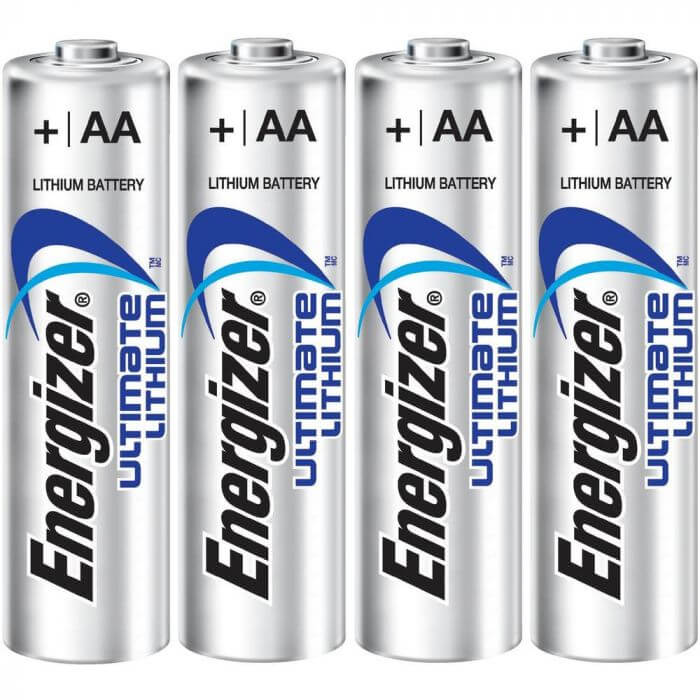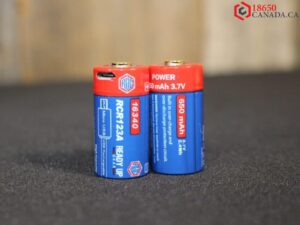Lithium-ion batteries have come an essential part of our ultramodern lives, powering everything from smartphones and laptops to electric vehicles. However, as their usage continues to grow, so does the concern about their environmental impact and the need for effective recycling methods.
In this article, we will explore the process of recycling lithium-ion batteries and the importance of this practice in reducing waste and preserving valuable resources.
Lithium-Ion Batteries
Lithium-ion batteries are rechargeable energy storage devices that utilize lithium ions to generate electrical energy. They consist of several components, including a cathode, an anode, a separator, and an electrolyte. These batteries are lightweight, have a high energy density, and can be recharged numerous times, making them popular in various industries.
In this article, we explore the process of recycling lithium-ion batteries and emphasize the importance of this practice in reducing waste and preserving valuable resources. We discuss the composition of lithium-ion batteries and the environmental impact associated with their improper disposal.
The article highlights the collection, sorting, disassembly, and separation of components as crucial steps in the recycling process. We delve into different recycling methods, including pyrometallurgical, hydrometallurgical, and mechanical processes, which enable the recovery of valuable materials like lithium, cobalt, nickel, and copper.
The challenges and opportunities in lithium-ion battery recycling are discussed, along with current innovations in the field. The article concludes by emphasizing the need for sustainable battery recycling solutions and collaborative efforts to create a circular economy for lithium-ion batteries.
Environmental Impact of Lithium-Ion Batteries

While lithium-ion batteries offer numerous benefits, their improper disposal can lead to significant environmental consequences. The batteries contain toxic materials such as lithium, cobalt, and nickel, which can leach into the soil and water, posing risks to human health and ecosystems. Additionally, the extraction of raw materials for battery production contributes to habitat destruction and carbon emissions.
Importance of Recycling Lithium-Ion Batteries
Recycling lithium-ion batteries is crucial for mitigating the environmental impact associated with their production and disposal. By recycling these batteries, we can recover valuable materials and reduce the need for extracting finite resources. Moreover, recycling helps prevent the accumulation of hazardous waste and promotes the development of a circular economy.
Understanding the Composition of Lithium-Ion Batteries
Before diving into the recycling process, it is essential to understand the composition of lithium-ion batteries. As mentioned earlier, they consist of a cathode (typically containing lithium compounds), an anode (composed of carbon or graphite), a separator (preventing direct contact between the cathode and anode), and an electrolyte (facilitating the movement of lithium ions). These components play a crucial role in the battery’s functionality and determine the recycling methods employed.
Collection and Sorting of Lithium-Ion Batteries
The first step in the recycling process is the collection and sorting of lithium-ion batteries. This is typically done through specialized recycling centers, collection points, or partnerships with electronic waste management companies. The collected batteries are sorted based on their size, chemistry, and condition to ensure proper treatment and maximize recycling efficiency.
Disassembly and Separation of Components
Once the batteries are sorted, they undergo disassembly and component separation. This involves removing the outer casing and separating the cathode, anode, separator, and electrolyte. The disassembly process can be done manually or through automated methods, depending on the scale of operations.

Battery Crushing and Shredding
After disassembly, the batteries are crushed and shredded to facilitate further separation. The crushing process breaks the batteries into smaller pieces, while shredding reduces them to fine particles. This step increases the surface area and exposes the valuable materials, making it easier to extract them during subsequent processes.
Recovery of Lithium and Other Valuable Materials
One of the primary objectives of lithium-ion battery recycling is the recovery of valuable materials, such as lithium, cobalt, nickel, and copper. Various techniques, including pyrometallurgical, hydrometallurgical, and mechanical processes, are employed to extract these materials.
Recycling Methods for Lithium-Ion Batteries
Pyrometallurgical Recycling Process
The pyrometallurgical recycling process involves high-temperature treatments to recover valuable materials. The crushed and shredded batteries are subjected to smelting or roasting, which separates the metals from other components. The recovered metals can then be purified and reused in new battery manufacturing or other industries.
Hydrometallurgical Recycling Process
In the hydrometallurgical recycling process, the crushed batteries are treated with various chemical solutions to dissolve the metals selectively. This method allows for the recovery of high-purity metals, which can be utilized in battery production or other applications.
Mechanical Recycling Process
The mechanical recycling process involves physical separation techniques to recover different components of lithium-ion batteries. These techniques include magnetic separation, eddy current separation, and sieving. Mechanical recycling is especially useful for recycling large quantities of batteries efficiently.
Challenges and Opportunities in Lithium-Ion Battery Recycling
Although significant progress has been made in lithium-ion battery recycling, several challenges still need to be addressed. One major challenge is the diverse range of battery chemistries and designs, which require different recycling approaches. Additionally, the cost-effectiveness of recycling methods and the scalability of recycling infrastructure pose significant hurdles. However, these challenges present opportunities for innovation and the development of more sustainable recycling technologies.
Current Innovations in Lithium-Ion Battery Recycling
Researchers and companies are continuously working on innovative solutions to improve lithium-ion battery recycling. Some of the current innovations include the development of advanced sorting technologies, enhanced recovery methods for valuable materials, and the utilization of artificial intelligence and machine learning for efficient battery identification and processing. These innovations hold great promise for the future of battery recycling.
Future Outlook and Sustainable Battery Recycling Solutions
As the demand for lithium-ion batteries continues to rise, the importance of sustainable battery recycling solutions becomes increasingly evident. Governments, industry stakeholders, and consumers need to collaborate to establish comprehensive recycling programs, invest in research and development, and promote awareness about responsible battery disposal. By embracing sustainable practices, we can create a circular economy for lithium-ion batteries and minimize their environmental impact.
Termination
Lithium-ion battery recycling plays a vital role in reducing waste, conserving resources, and mitigating environmental hazards. The recycling process involves the collection, sorting, disassembly, separation, crushing, and shredding of batteries, followed by the recovery of valuable materials through various recycling methods.
While challenges exist, ongoing innovations and collaborative efforts offer opportunities for a more sustainable future. By recycling lithium-ion batteries, we can contribute to the preservation of our planet and build a greener tomorrow.
FAQs
Is it Necessary to Recycle Lithium-Ion Batteries?
Recycling lithium-ion batteries is crucial for minimizing environmental impact, conserving valuable resources, and promoting a circular economy.
What Happens if Lithium-Ion Batteries are not Recycled?
Improper disposal of lithium-ion batteries can lead to environmental pollution, hazardous waste accumulation, and resource depletion.
Can all Components of Lithium-Ion Batteries be Recycled?
Yes, various recycling processes allow for the recovery of valuable materials such as lithium, cobalt, nickel, and copper from lithium-ion batteries.
Are there any Alternative Battery Technologies that are Easier to Recycle?
While some alternative battery technologies may be easier to recycle, the widespread use of lithium-ion batteries makes their recycling a priority.
How can I Responsibly Dispose of my Old Lithium-Ion Batteries?
It is recommended to check with local recycling facilities or electronic waste management companies for proper disposal options.

